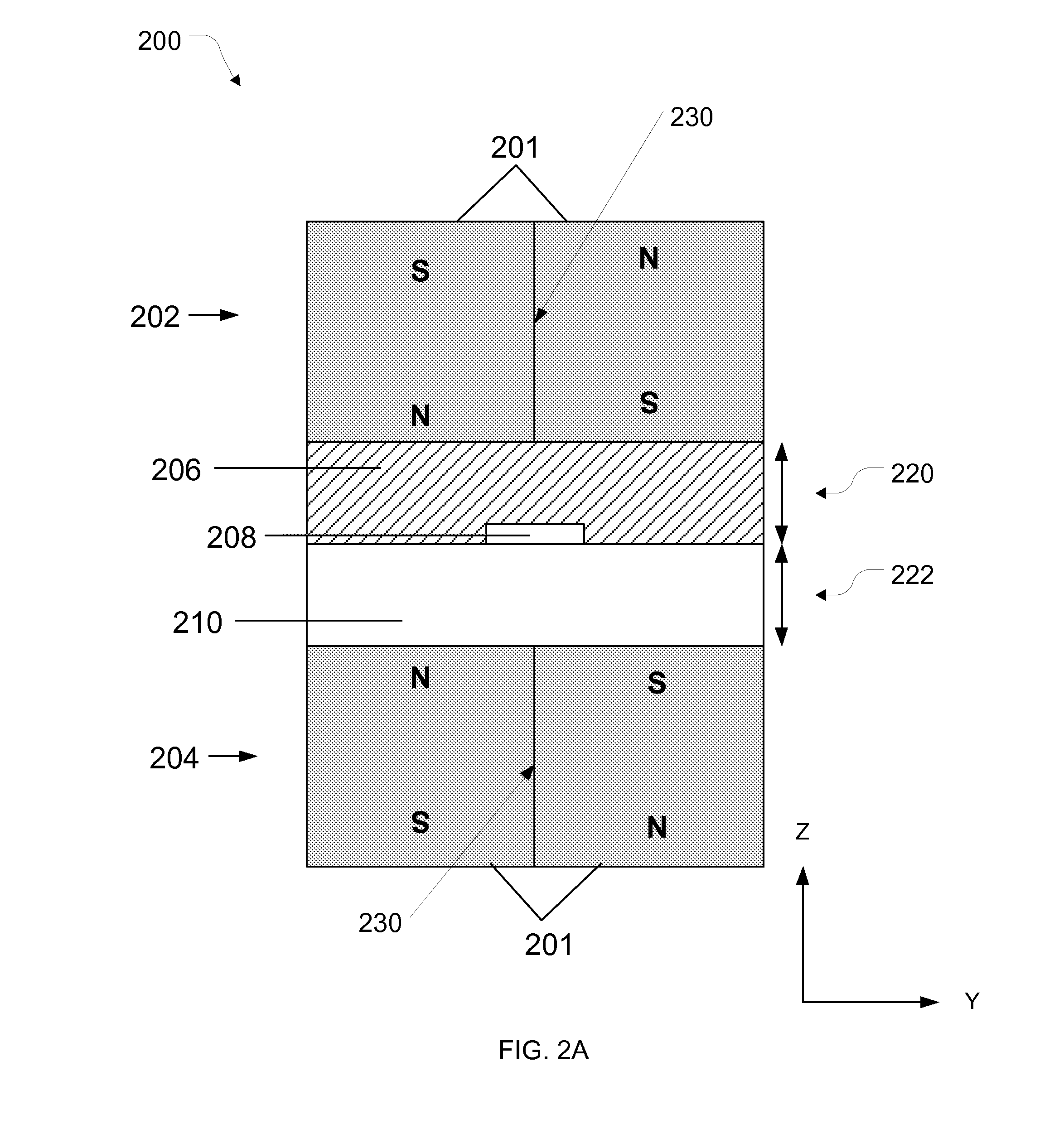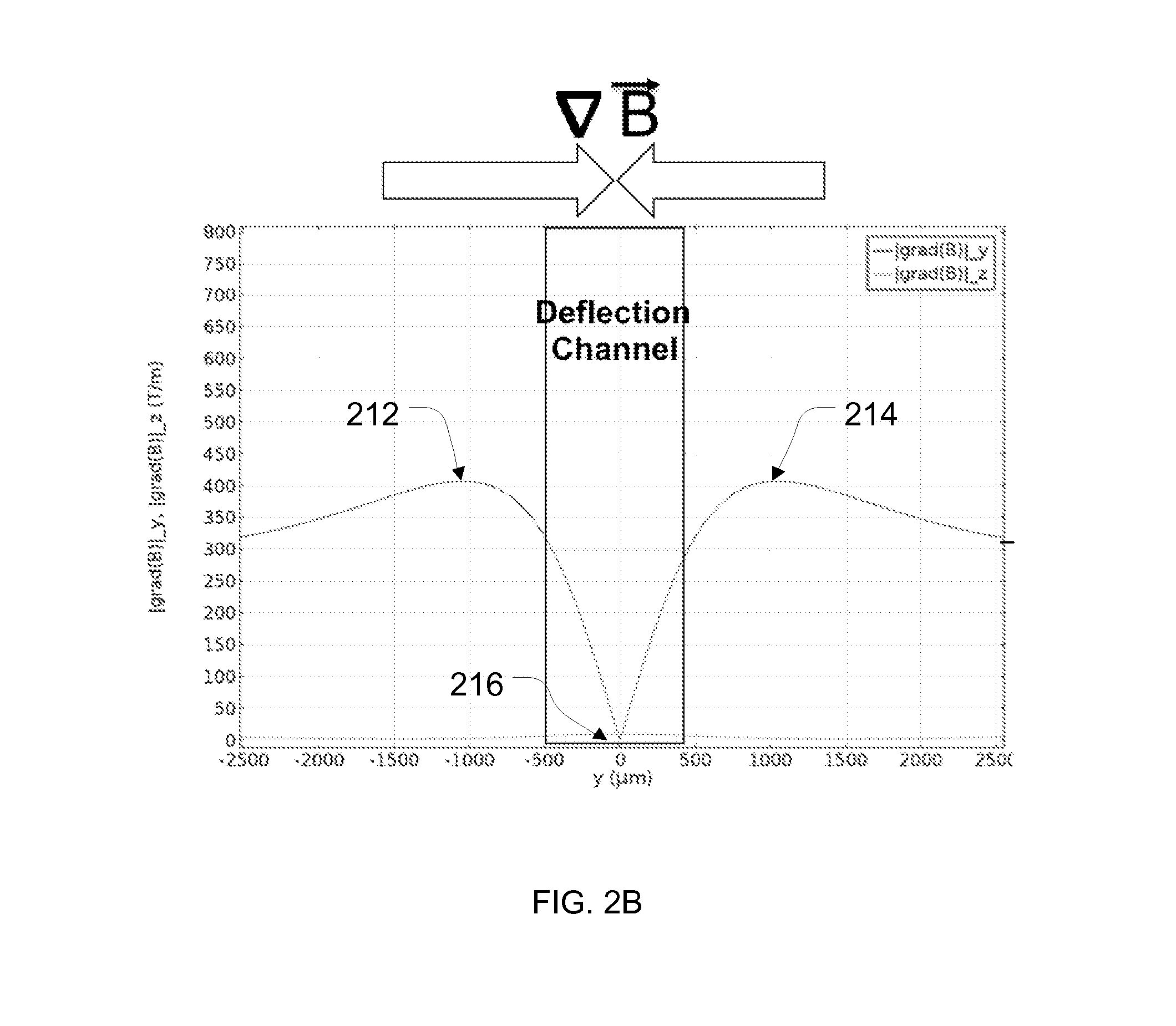Microfluidic sorting using high gradient magnetic fields
a magnetic field and microfluidic technology, applied in the field of microfluidic sorting of analytes using high gradient magnetic fields, can solve the problems of plaque aggregates disrupting the operation of microfluidic devices, cell binding non-specifically to the walls, and limiting the sample volume that can be processed
- Summary
- Abstract
- Description
- Claims
- Application Information
AI Technical Summary
Benefits of technology
Problems solved by technology
Method used
Image
Examples
example 1
Isolating Cancer Cells in Blood
[0155]The purpose of this example was to simulate a cancer patient's blood by spiking cell line cancer cells to represent circulating tumor cells (CTCs) into a healthy donor's blood sample, efficiently tagging white blood cells with magnetic beads, and removing the tagged white blood cells using magnetophoresis to isolate the cancer cells for detection and / or further measurements. The protocol below describes the isolation of CTCs using a system that employed continuous (i) deterministic lateral displacement (hydrodynamic cell sorting) for size-based separation of both white blood cells and tumor cells from whole blood, (ii) inertial focusing for precise positioning of these cells in a micro-channel, followed by (iii) microfluidic magnetophoresis for immune-magnetic isolation of circulating tumor cells. The example process described herein was conducted using two separate chips (named “CTC-iChip1” and “CTC-iChip2”), that were serial (inline) fluid comm...
example 2
Examining Device Robustness and Effectiveness
[0173]Additional studies also were performed using copies of the CTC-iChip1 and CTC-iChip2 designs described above in Example 1. In particular, the CTC-iChip1 and CTC-iChip2 systems were fabricated (as described in Example 1) for performing similar but separate experiments at three different research sites so as to review the robustness and effectiveness of deterministic lateral displacement, inertial focusing and magnetophoresis techniques (as combined in the CTC-iChip configuration) for isolating circulating tumor cells from whole blood samples and the depletion of white blood cells. The three research sites are referenced below as “JRD,”“JDX,” and “MGH.” Blood samples were prepared and processed for each experiment using the following workflow: (a) blood sample acquisition from donors and sample preparation, (b) isolation of CTCs using the iChip configuration (CTC-iChip1 and CTC-iChip2) as fabricated above, (c) plating of the isolated ...
PUM
| Property | Measurement | Unit |
|---|---|---|
| distance | aaaaa | aaaaa |
| distance | aaaaa | aaaaa |
| distance | aaaaa | aaaaa |
Abstract
Description
Claims
Application Information
 Login to View More
Login to View More - R&D
- Intellectual Property
- Life Sciences
- Materials
- Tech Scout
- Unparalleled Data Quality
- Higher Quality Content
- 60% Fewer Hallucinations
Browse by: Latest US Patents, China's latest patents, Technical Efficacy Thesaurus, Application Domain, Technology Topic, Popular Technical Reports.
© 2025 PatSnap. All rights reserved.Legal|Privacy policy|Modern Slavery Act Transparency Statement|Sitemap|About US| Contact US: help@patsnap.com



